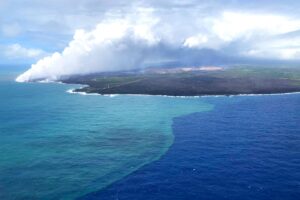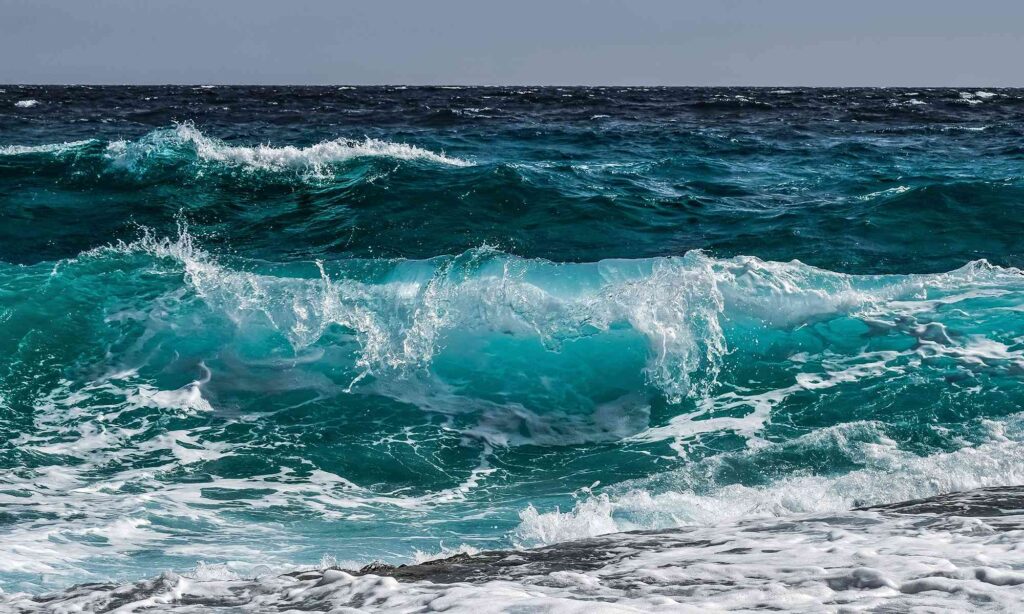The Smallest Ocean in The World
-by Abhrajita Mondal
–Reading Time – 7 min Approx
–Edited by – Srishti Bhattacharyya
Before we go into which is the smallest ocean in the world, you should have some knowledge about oceans in general. According to the definition, ‘ocean is a huge body of saltwater’. It covers nearly 71 percent of the earth’s surface. Oceanographers, i.e. those who study oceans, think that earth has one global ocean. Moreover, you will be amazed to know, that 99 percent of the water on earth is present in the ocean. The ocean has a huge impact on the flora and fauna inhabiting the earth. It has impacted the climate, weather, and food habits of organisms since man can recall. However, till now scientists have not been able to study the entire ocean. 
There is a separate subject called Oceanography that deals with the study of the ocean. Today, a separate field has emerged called Bio-robotics. Scientists aim to send bio-robots to study the depths of the ocean in detail.
The ocean hides several secrets inside its womb. Some parts are too deep for divers and researchers to navigate. Talking about the Mariana Trench in the Pacific and the Philippine Trench, these are the deepest parts of the ocean. The Atlantic is shallower than the Pacific. There are a whole lot of species that call it home. Many marine ecosystems are on the verge of extinction today owing to water pollution and rising temperatures. It is believed that 90 percent of the ocean’s species are still undiscovered. Currently, there are only 226,000 known species inhabiting the oceans.
Let us know more about the smallest ocean in the world.
Which is the Smallest Ocean in the World?
The Arctic Ocean is the smallest ocean in the world. It has a total area of 14 million square kilometres and is 1.5 times the size of the U.S. and ten times smaller than the Pacific Ocean. Moreover, the Arctic Ocean is the earth’s northernmost water body. The average depth of an ocean is about 12,100 feet. Apart from being the smallest, it is also the least studied ocean. The deepest parts of the Arctic Ocean are called Canada Basin. The area is covered in ice year-round. The Arctic environment is changing quite fast due to global warming. Thus, the Oceanography fraternity believes that it needs urgent attention.
There is a need for additional opportunities to study the depth of the Arctic Ocean and predict future changes. A tremendous loss has been noted in the thickness of the ice sheets in the large 25 years. Researchers believe that the Arctic cover might be lost by the year 2100. It would turn the Arctic Ocean into an ice-free zone. One marker of the loss of ice cover in the Arctic is the fast loss of glaciers and sea ice. A lot of organisms face habitat loss due to the same. Additionally, it will also have effects on human communities. The Arctic Ocean is an important topic in international communities today.
Are you wondering, how many people live in the Arctic region? Well, you will be in for some surprises. The U.S., Greenland, Russia, Iceland, and Norway, jut into the Arctic Ocean. About four million people inhabit the Arctic area. Many of the inhabitants have found means of livelihood from the ocean itself. They engage in activities like fishing, seal-hunting, and whale-hunting to survive. The countries in the Northern Hemisphere are taking a lot of interest in the conservation of the Arctic Ocean. Many explorers have driven holes through the thick sheets of ice, to discover the life underneath. The studies are particularly difficult due to the inaccessibility factor. Moreover, plankton is at the base of the Arctic food chain. The group consists of varied species of algae and bacteria. A large number of small fish and whales feed on plankton. Sea anemones, corals, and anemones live further deep down. Polar bears are inhabitants who can often be spotted on the floating ice blocks. You can also find plenty of Walruses there.
How Many Oceans are there in the World?
To be exact, there is only one ocean. However, the ocean is geographically divided into various areas. There are five oceans on earth, the Atlantic, Pacific, Indian, Arctic, and Southern Ocean. The Pacific, Atlantic, and Indian are the most popular oceans. Some people know of the 7 oceans of the world but that is a wrong concept. There are not seven oceans, but seven seas in the world. The seven seas are – North Atlantic, South Atlantic, North Pacific, South Pacific, Arctic, Indian, and Southern.
Currently, there are five oceans by category. The previously known Antarctic Ocean is renamed the Southern Ocean and encircles Antarctica. Researchers have often debated whether the Southern Ocean deserves so much attention. You should know that while the other four oceans are known by their continents, the Southern Ocean is known by its currents.
The Antarctic Circumpolar Current or ACC was established almost 34 million years ago. It is the northern boundary of the Southern Ocean. Inside the ACC the water is colder and less salty. The ACC pulls in more water from the surroundings than any other ocean, thus, driving the global circulation system. It transports heat across the entire planet earth. Therefore, you can say, the Southern Ocean controls the temperature of the earth to a huge extent.
Which is the Largest Ocean in the World?
The Pacific Ocean is the largest, oldest, as well as the deepest ocean. Also known as the ‘Ring of Fire’, it encircles the outer boundary of the Pacific Ocean Base. The ocean spreads across 63 million sq. miles. The rocks here are more than 200 million years old. Furthermore, the area is susceptible to intense earthquakes and volcanic eruptions. The reason can be attributed to the movement of tectonic plates.
The second largest ocean in the world is the Atlantic Ocean that covers approximately 20% of the earth’s surface. It lies somewhere between North and South America on the western side and is more than 40 million sq. miles. On the eastern side, it touches Europe and Africa. The North of the Atlantic touches the Arctic and the south, the Southern Ocean. It is responsible for the weather on earth. It also remains the main reason behind Hurricanes. One of the fascinating facts is that it acts like a conveyor belt. The warm water becomes less dense and rises, and cool water takes its place. Thus, it gives rise to thermohaline circulation.
The Atlantic Ocean also houses a diverse range of wildlife. A variety of sea mollusks, corals, and fishes can be found in the Atlantic. They are found more than 3,000 feet below. Dolphins and sea turtles also live in the ocean. The number of Great White Sharks is also increasing. The return of the Great Whites is a success story for conservationists. However, all is not good in the waters. The North Atlantic Right Whale is close to facing extinction. Only about four hundred are left today in the wild. Today, the ocean has been impacted to a huge extent due to the inconsiderate activities of humankind.
Largest and Smallest Sea in the World:
Before indulging in this topic, let us first clarify the difference between oceans and seas. Seas are smaller in size. It is usually surrounded by land on both sides. The land guides the sea to the mouth where it meets the oceans. There are fifty water bodies that can be ascertained as seas. There are also other water bodies that fit this definition but are not called seas.
The largest sea in the world is the Bering Sea. It is a marginal sea in the Northern Pacific and is near the Aleutian Islands. The sea is characterized by strong winds and intense currents. It has the most ferocious waves on earth.
The Sea of Marmara in Turkey is the smallest one on earth. It is an inland sea that connects the Aegean Sea with the Black Sea. The sea has many island chains amidst the turbulent waters.
So, now you know about not only the oceans but also the largest and smallest sea in the world. Oceans and seas are indeed very important for our survival. They provide food to the entire ecosystem and also affect the weather. The water bodies also hide several undiscovered territories in their depths. Let us find out more about them in our future endeavors.
-by Abhrajita Mondal
Dear Reader, Hope you liked the post. If you think our initiative “The Creative Post” is worth supporting, then please support us by paying the amount you think we are worthy of. We believe, the value of content should be decided by the consumer. Hence we request you to evaluate our worth and pay accordingly by Clicking Here.


